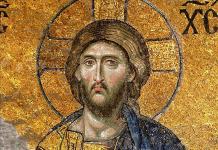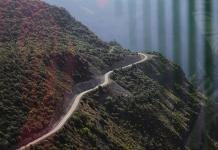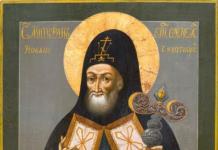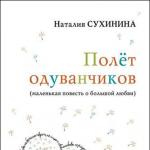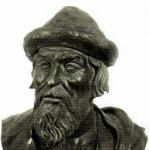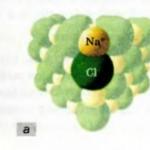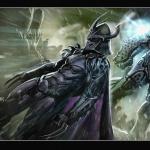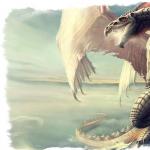The village of Barkolabovo is located in the Bykhovsky district of the Mogilev region of the former Grand Duchy of Lithuania, and today in the Republic of Belarus. These places were inhabited by humans so long ago that it’s hard to believe. Evidence is provided by archaeological sites near the Dnieper. An early Mesolithic site was found here, dating back to the 10th–8th millennium BC. Settlements from the early Iron Age and Kievan Rus times were also found. This indicates that the history of Belarus does not begin in 1917, as we have always been told, but its roots go back centuries. And once upon a time, our ancestors walked from here along the Dnieper to Kyiv, and from there to the Black Sea.
In 1654, near the ancient settlement, the captain and the Disna elder rode onto the mountain near the Dnieper Barkulab Ivanovich Korsak, who came from the ancient Belarusian family of Korsakov. He, sitting on a horse, looked around everything well and decided to build a castle on this mountain to defend our eastern borders.
The warriors of Barkulab Ivanovich proposed to name the castle in honor of him, so that the enemies would fear this castle just like Barkulab in battle. That's how it appeared Barkulabovo (Barkolabovo).
Here is what is written in the ancient manuscripts: “My dear, Pan Barkulab Ivanavich Korsak, captain and elder of Desna, with the kindness of Gaspadar Karal for his outstanding merits, for courage, self-confidence and for insubordination among the vassals and knights on the right in the deep forest, on the forest floor , you are the best Brus, and your will has been revealed and you have given 12 years to the jumping people, with the will of God, with the blessing of the clergy, we have established the castle of our Barkulabau.”
Barkulab Ivanovich Korsak was a good and famous warrior. They With Roman Khodkevich castles were also founded in Disney, Lepele, Chashniki, populating these places with good people. Our Fatherland, our Motherland wept bitterly when her glorious son Barkulab Korsak died. He died 12 years after he founded the village Barkolabovo. And they buried him in Vilna in the Orthodox Church of the Blessed Virgin Mary.
Krichevsky headman Bogdan Solomeretsky married his daughter Eva Barkulabovna and received Barkolabovo. They say that Bogdan Solomeretsky was an opponent of the Union of Brest and supported the Orthodox brotherhoods in everything. And he converted Barkolabovo into a stronghold of Orthodoxy. Before him there were two Orthodox churches here. And he and his wife have already built another Orthodox church Church of St. Yuri.
Their children Bogdan Bogdanovich And Elena Bogdanovna were also true Orthodox. They were raised in the Orthodox spirit. They did not agree to convert to other confessions or change their faith, but founded a male Orthodox monastery in Barkolabovo. This monastery becomes a major center of opposition to the Uniate movement in Belarus. They say that later in this Barkolabovsky Monastery All the princes of Solomeretsky were buried. It was in the Orthodox monastery that the priest Fedor Filippovich Mogilevets a well-known Barkulabov Chronicle.
Historical reference. The Barkulabov Chronicle is a monument of Belarusian chronicle writing from the early 17th century. Preserved in the only list of the so-called Patriarchal manuscript of the third quarter of the 17th century, which is stored in the State Historical Museum in Moscow. The chronicle begins with information about the Sejm of 1545 in Brest and the construction of the Mogilev castle in 1526. The capture of Polotsk is described Ivan the Terrible. The Barkulabov Chronicle contains unique information about the history of Eastern Belarus, information about some historical events from the history of Belarusian culture and the Orthodox Church, as well as about historical figures, including two False Dmitry, about the emergence of Barkolabovo and other local history and ethnographic material. The main sources for the chronicle were the author’s personal observations and memories. The chronicler was close to the people and reported from a patriotic position. All this gives the Barkulabov Chronicle the features of a monument of the historical-memoir genre. The chronicle was written in living Belarusian language, figurative and colorful.
The Barkolabovsky priest wrote down in the chronicle what he saw with his own eyes. For example, he wrote that at the end of the 16th century, a Moscow army approached here, near Mogilev, and began to cut out and burn villages. There was a “Litvinian” detachment in Barkolabovo, which sent messengers to Kopys, Shklov, where our detachments were also stationed. They went to Mogilev and, as the author says, “they drove, killed, killed the masked soldiers and killed so many of their troops that for as many days as their corpses died and died so that people didn’t dare to marry each other.” We haven’t eaten any food or fish since Dnieper.” .
The chronicler wrote that the Cossacks Severina Nalivaiko they burned houses, robbed taverns, killed everyone and were more terrible than any fierce enemy.
There is a lot of interesting information in the chronicle about this village of Barkolabovo. The chronicler writes how the Chancellor of the Grand Duchy of Lithuania came to visit Bogdan Solomeretsky Lev Sapega together with many noble gentlemen.
After the Solomeretskys, Barkolabovo falls into the hands of Bogdan Stetkevich. He married the daughter of Bogdan Solomeretsky and received this holy place. Bogdan Stetkevich was a good warrior and a sincere Orthodox believer. He and his wife founded an Orthodox women's monastery in Barkolabovo. Barkolabovo was once one of the cultural and religious centers of Belarus.
When the Bolsheviks came here, they began to destroy everything. In 1928 Women's Holy Ascension Monastery was closed, many buildings were destroyed, and some of them housed a pioneer camp. In the 1990s, the remaining buildings of the monastery were razed to the ground. Only recently the nuns returned here again, and the Holy Ascension Convent is being rebuilt.
The image of the Mother of God of Barkolabovskaya came to the monastery in the middle of the 17th century. Then the Russian-Polish war was going on and Russian princes were returning from the war through this monastery. According to legend, in front of the monastery the horses fell to their knees and could not walk. Everyone understood that the Mother of God did not want to leave this earth. And the icon was left in the Barkolabovsky monastery, where it has been located for more than 350 years. When the Bolsheviks arrived, the nuns began to distribute icons, and people passed them from house to house. Just so that it does not fall into the hands of the Bolsheviks, so that they do not burn it. Later the image was transferred to Bykhov Church, and a year ago the Mother of God Barkolabovskaya returned to her monastery. People come here, pray to this miraculous image and receive help from it.
There once stood in Barkolabovo Monastery Church of John the Baptist. In the dungeons of this temple, in the crypts that are still here, representatives of high-born noble families were buried: after the Stetkevichs, they ruled here Polubinsky, after 2 centuries Barkolabovo belonged to the Sapiehas.
Immediately after the first section Polish-Lithuanian Commonwealth in 1772 Barkolabovo falls into the claws of a double-headed eagle Russian Empire. At that time there were 2 churches, a monastery, a bishop's house, two mills, and 465 people lived here. There was also a Uniate school here. And in this two-story building there was an Orthodox church school.
At the end of the 19th century, 605 people already lived in Barkolabovo. There was a copper smelter, a sawmill, a tavern, seven shops, and fairs were held twice a year. And in 1904 it was decided to build another Orthodox church in Barkolabovo. And they consecrated this church in honor of Our Lady of Kazan. During Soviet times, this church was closed and converted into a sports hall. Now it has been returned to believers and is being restored. It is an architectural monument of pseudo-Russian style.
Local residents say that the Second World War did not affect Barkolabovo at all, despite the fact that it is nearby Mogilev, Bykhov, in which there were heavy battles. During the war, neighboring villages were burned, people were killed, but at the beginning of the war the Germans rode through here on motorcycles, and no one saw them again. And they also say that when the Bolsheviks closed the nunnery, one elder said: “Khutka pachnettsa vaina, ale getae mestsa yana ne krane.” All people believe that it is the Mother of God of Barkolabovskaya who patronizes this place. They say bombs fell on vegetable gardens, but miraculously did not explode.
No matter how the Bolsheviks tried to prove to us that there is no God and that we all came from monkeys, no matter how they destroyed churches, no matter how they destroyed holy images, everything returns to its place. Temples are rebuilt, icons are returned, miracles happen. As the classic said, “in Belarus God live and live forever.”
The Ascension Convent stands near the village of Barkolabovo, Bykhovsky district, near the place where Lakhva flows into the Dnieper. Every spring, the rivers flood, the water rises, and the monastery risks going under water.
Just a few years ago, people caught fish with their hands right next to the walls of the monastery, but the monastery itself was never flooded, local residents say.
They are sure: it’s all about the miraculous icon of the Barkolabovskaya Mother of God, which is kept in the temple on the territory of the monastery.
This icon is not very ancient - it is a little over 350 years old, but the miracles it works number in the thousands. It all started with her appearance in the monastery - the nuns believe that she herself chose it.
Defender of Eastern Belarus
The Orthodox convent in Barkolabovo was founded in 1623 by Bohdan Statkevich. There was a major road next to the monastery, many people came here, so it soon became quite famous. In 1659, during the war between Lithuania and Russia, Prince Pozharsky returned home along this road. As he drove past the gates of the monastery, the horse stopped and no one could move it. For a long time Pozharsky could not understand what was the matter, and only in the evening it dawned on him: among the prince’s trophies there was an icon of the Mother of God, which he was taking home. As soon as Pozharsky presented the icon to the monastery, the horse set off.
The icon was placed in the center of the temple.
When the sisters came there in the morning, they saw that the icon stood on the right side of the temple - she chose this place for herself, says nun Antonina. - On the right side there are men, on the left - women, that is, the right side is dominant, and the Mother of God has shown that she wants to rule here.
No matter how much the icon was moved to another place, the next morning it always returned to the right side of the temple.
From the first days, people saw that the icon worked miracles: it not only chose its own place, but also healed people from any ailments. Her fame spread throughout the area, and soon she began to be considered the protector of Eastern Belarus.
Meanwhile, the monastery grew and developed. Twice a year, large fairs were held at its gates, where people from all over the world came and exchanged their goods for those of the monastery. The monastery itself lived by subsistence farming and was completely self-sufficient. There was a copper smelter here, scientists came here, many of whom were engaged in agriculture. At the monastery, they were engaged in selection and developed new varieties of plants. There was also a Sunday school where girls of different ages studied. Later, Tsarina Alexandra Feodorovna often came here. Thanks to all this, the monastery became one of the most influential in Eastern Belarus.

To save the icon, it was walled up in the wall
At the end of the 18th century, people began to fear that the monastery might go under water. Every spring, because of the floods, he found himself as if on an island, the water splashing at his gates. Then it was decided to transport the sisters to another monastery; about 70 nuns out of 300 remained in Barkolabovo. Together with soldiers and peasants, they carried earth in bags and filled the river with it. They piled up so much earth that they changed the course of the river! They separated the branch of the Dnieper - it turned out to be a lake. Now the river carried its waters past the monastery.
During the War of 1812, the French wanted to burn it, but first decided to take out everything valuable. One of the soldiers reached for the icon, but as soon as he touched it, he was thrown back with enormous force. Seeing this, the others decided to leave the holy place alone.
The monastery existed until 1920 and was closed during the persecution of the Orthodox Church. The sisters convinced the guards to allow them to take out the miraculous icon and hid it. She was carried from house to house, hidden either in the vestibule or in the entryway.
All these years, the icon was included in the lists of property of the monastery, the Mother of God made sure that the authorities did not notice its loss and did not look for it, the sisters say. “It’s just a miracle that they managed to save it.”
During the war, one of the nuns walled up the shrine in the wall of the house, where it lay for many years. The nuns themselves were arrested after the war. Only in 1953, when they were released from prison, the sisters showed the place where the icon was located, and the Mother of God returned to the temple - however, not in Barkolabovsky, but in Bykhovsky, where it was kept for the next half century. And the Barkolabovsky monastery no longer existed.
The icon continued to work miracles, heal people, and the Bykhov residents took great care of it, the nuns recall.
When in the 1990s, Archbishop Maxim wanted to take the icon to Mogilev, he could not do this - the Bykhovites were against it, for them the icon was a real miracle. Thus, the Mother of God once again confirmed that she herself determines where she should be.

The icon heals all who believe
The current abbess of the monastery, schema-abbess Antonia, comes from a village neighboring Barkolabovo. When she was a little girl, her mother took her to the icon. When the girl grew up and became the schema-hegumen of the Orsha Holy Dormition Convent, the Bobruisk diocese decided to revive the monastery in Barkolabovo - this was in 2008.
When we arrived here, there was nothing here,” recalls nun Antonina, who moved here from the Orsha monastery with her sisters and mother. - Only a blue cross stood in the middle of the field - it was erected in 1996 as a sign of veneration of these holy places.
The nuns settled in their mother's old house. In March 2009, a temple was founded on the territory of the monastery, and in May 2010 it was consecrated.
Mother ordered a copy of the icon from the Orsha workshops, and we prayed with this copy for a year. But then mother gave a copy to Bykhov, and the icon returned here. The residents of Bykhov cried, losing her was a great grief for them, they say in the monastery. - A few weeks later, a family with a sick girl came to the icon in Bykhov; she had psoriasis. This family did not know that a copy now hangs in the temple. They prayed earnestly and believed - and the girl was healed, the disease immediately disappeared, all its visible manifestations disappeared. For Bykhovites this became a sign, the Mother of God seemed to be saying: “Don’t be afraid, I am with you, and through the copy the same grace is given as through the real icon.”
Nun Antonina recalls how she once told this story to people who came to their church, and her words were immediately confirmed by one of them.
My wife and I did not have children for five years. I bought a copy from you and hung it at home. After I got the icon, my wife became pregnant,” he said.
In the monastery, miraculous stories of healing are told one after another. There is a story about a guy with Bayle's disease who was completely healed after a prayer service was held in the church - a few months later he came to the monastery, and the sisters saw an absolutely healthy child jumping happily. They talk about a six-year-old boy whom the icon healed of leukemia, about a woman who could not get pregnant for 13 years and was able to become a mother only after praying to the Barkolabov icon, about a woman who was cured of paralysis and gave the monastery a gilded cross decorated with precious stones as a sign of gratitude.
She was completely paralyzed,” Antonina recalls. - One day she had a dream in which the Mother of God said: “Give notes to 33 churches, and you will be healed.” The woman did this, but the disease did not go away. From somewhere she learned about the miraculous icon in Barkolabovo and asked her children: “Take me to the monastery to see the icon - if this doesn’t help, I won’t ask you for anything anymore.” They brought her, the patient kissed the icon and a few days later began to walk!
While we are talking with the nun, people enter the temple. They say that they came to the holy places from Kaliningrad.
A lot of people from Russia come here,” my sister says. - Many go to the icon, ask it for a miracle - and a miracle happens. The main thing is faith.
How to get there?
Barkolabovo is located approximately 35 kilometers from Mogilev towards Bykhov. You can get there by car, or by bus to Bykhov (buses run every day, a ticket costs 32,950 rubles), and from there to the village. Buses run from Bykhov to Barkolabovo three times a week - on Tuesday, Wednesday and Sunday. Departures are at 6.20 and 13.00, the ticket costs 9,500 rubles.
The Borkolabovo convent was located on the left bank of the Dnieper, south of the village of Borkolabovo, 12 versts from the city of Bykhov. According to the chronicles, the name of the village Borkolabovo (Borkulabovo) comes from the name of the captain of the Polish king August Barkulab Ivanovich Korsak. In 1564 he founded his castle, and four years later he built two churches. In 1583, after the marriage of Korsak’s daughter Eva with Prince Solomeretsky, the village of Borkolabovo became the cultural center of the Dnieper region.
From the second half of the 16th century, the territory of Belarus was part of the united Polish-Lithuanian state - the Polish-Lithuanian Commonwealth, in which the royal authorities were inclined to the policy of Catholicizing the population. Barkulab Korsak and his successors did not support such trends and sought to counteract them.
In 1594, Prince Solomeritsky founded an Orthodox church in honor of St. George the Victorious. In 1626, the children of Prince Solomeritsky, Bogdan and Anna, whose mentor was the famous Meletiy Smotritsky, built an Orthodox monastery for men, to whom they donated the villages of Sutoki and Malakhovo. Moreover, after some time, Princess Elena Solomeritskaya, having married Bogdan Stetkevich, negotiates with him about the construction of a convent.
In 1641, Stetkevich received “permission for the Borkolabovsky monastery.” Having become the founder of the monastery, he gives him ownership of land (Barok Island, field, meadow), a water mill and the right to fish in the Dnieper up to the Bykhov border. And although the princess soon died, her husband fulfills this vow together. Famous buildings of the monastery of this time are the Ascension Church and the bell tower.
In the cathedral church of the monastery there was kept a miraculous icon of the Mother of God, donated to the monastery in 1659 by Prince Pozharsky, who was returning with troops to Russia from Lithuania. The icon was initially placed in the center of the Church of the Ascension; the next night the icon miraculously moved to the wall of the temple. Pilgrims not only of the Orthodox faith, but also Uniates and Catholics flocked to the Borkolabovsky monastery to venerate the image. In 1882, the Ascension Church burned down, but the miraculous image, iconostasis and utensils were saved from the fire. The icon is one of the most revered images of the Mother of God in Eastern Belarus.
In the 1920s, the Borkolabovsky monastery was closed; the monastery buildings housed a club, an orphanage, and a pioneer camp, and in the 1990s, all the monastery buildings were destroyed. By the end of the twentieth century, not even ruins remained on the site of the monastery, and a worship cross was erected here in memory of the monastery.
The miraculous icon survived all the wars of the 17th - 20th centuries, and all the persecution of religion, including Soviet times. During the Great Patriotic War, the icon was preserved by former nuns (according to other oral information, the image was in the chapel at the Bykhov railway station). In 1953, before Easter, the miraculous image was brought to the Holy Trinity Church in Bykhov, where it remained until 2010. On May 13, 2010, a newly built church in honor of the Holy Forerunner and Baptist of the Lord John was consecrated at the Holy Ascension Convent, and on July 25, 2010, the solemn transfer of the miraculous “Borkolabovskaya” Icon of the Mother of God from the city of Bykhov to the revived monastery took place.
In 2011, the construction of the bell tower was completed in the monastery. A refectory has been built on the territory of the monastery, a utility block has been put into operation, a house for the nuns’ dormitory has been put into operation, there is a small hotel for guests and volunteers, and a two-story monastic building is being built. In the future, it is planned to restore the stone temple in honor of the Ascension of the Lord.
In 2012, in consideration of the cultural and historical value of the Borkolabovskaya Icon of the Mother of God, the National Bank of the Republic of Belarus issued 4 commemorative coins “Icon of the Most Holy Theotokos “Borkolabovskaya”.
The monastery was revived at the request of His Grace Bishop Seraphim of Bobruisk and Bykhov by a resolution of the Synod of the Belarusian Exarchate of the Moscow Patriarchate on June 12, 2008. The revived monastery was located in the village of Borkolabovo near Bykhov, in the historical place of the appearance of the icon of the Mother of God of Borkolabovo.
